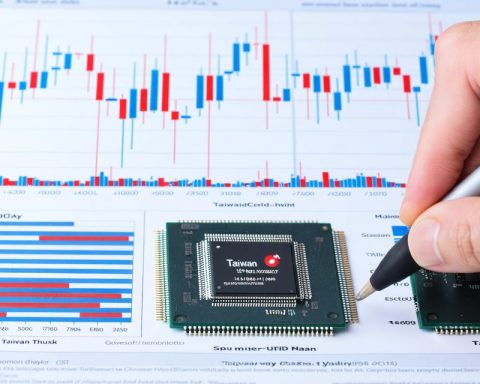- Unity’s Q4 performance impressed investors, with shares climbing 25% amidst strong financial results.
- Quarterly revenue hit $457 million despite strategic setbacks, highlighting substantial cost reductions and profitability.
- Key contributions came from the introduction of Unity 6, featuring new pricing and AI advancements in advertising.
- Adjusted EBITDA reached $106 million with a 23% margin, alongside free cash flow matching these figures.
- Despite a 17% dip in annual revenue to $1.81 billion, strong operational cash flow of $316 million provides stability.
- Unity projects Q1 2025 growth with expected revenue of $405-$415 million and EBITDA of $60-$65 million.
- Investors remain optimistic as Unity leverages AI capabilities and fiscal strategies for a transformative recovery.
A dramatic transformation unfolds as Unity ascends from a year marred with challenges, its impressive Q4 results acting as a signal flare to investors. Shares soared 25% by mid-morning, as investors rallied behind the tech giant’s striking performance. The $457 million quarterly revenue, although a 25% setback due to strategic realignment, masked deeper achievements—costs were slashed with precision, channeling significant profit.
Unity 6 arrives like a savior, bolstered by a strategic pricing overhaul and cutting-edge AI enhancements in advertising technology. The impact? A robust $106 million in adjusted EBITDA, with a smooth 23% margin that echoes efficiency. Notably, free cash flow paralleled this success, soaring to $106 million, reflecting Unity’s leaner, more agile structure.
Yet, profits tell only part of the story. The full-year narrative reads as a paradox: a 17% decline in revenue to $1.81 billion amidst a teetering Create Solutions segment, contrasting against vibrant surges in subscription and strategic industry revenues. Still, with $316 million flowing from operations, there’s breathing room—a crucial asset as Unity navigates these transitory tides.
Navigating the horizon, management eyes potential with prudent optimism. Projections for Q1 2025 signal a steady hand at the wheel, aiming for $405-$415 million in revenue and a focused $60-$65 million in EBITDA—a clear testament to its commitment to sustainable recovery.
Investors sense Unity’s revival—an ecosystem rebounding through AI prowess and fiscal discipline. If maintained, this momentum could redefine Unity’s trajectory, turning the page on past struggles and setting a course towards groundbreaking innovation and sustainable growth. Unity, once a company wrestling with internal discord, now seems poised to write its next chapter—bold, invigorated, and ready for the future.
Unity’s Resurgence: How Strategic Moves and AI Integrations Are Shaping Its Future
How-To Steps & Life Hacks
Maximizing Unity 6’s Capabilities:
1. Leverage AI in Advertising:
– Automate Ad Placement: Use Unity’s AI-powered tools to optimize ad placements and increase engagement. Adjust algorithms based on real-time data to maximize ROIs.
– Personalize User Experience: Integrate Unity’s machine learning capabilities to tailor content recommendations and increase user retention.
2. Harness Subscription Models:
– Tiered Offerings: Create different tiers of subscription services to cater to diverse user needs. This approach can increase user acquisition and retention.
– Content Updates: Regularly update content for subscribers to maintain interest and reduce churn.
Real-World Use Cases
– Gaming Industry: Companies like Electronic Arts use Unity to create immersive game environments, benefiting from the engine’s robust performance and intuitive interface.
– Architecture Visualization: Architects use Unity for real-time 3D walkthroughs, enabling clients to experience designs before they’re built.
– Augmented Reality (AR) Applications: Unity’s AR capabilities are utilized in retail to allow virtual try-ons for customers, enhancing the shopping experience.
Market Forecasts & Industry Trends
– AI-Powered Solutions: The integration of AI in development tools is expected to accelerate, with Unity leading in automated content generation and personalized experiences.
– Subscription Economy: Unity’s shift towards subscription services mirrors a broader trend in software, aiming to provide steady revenue streams and deeper user engagement.
– XR (Extended Reality) Development: Unity is poised to become a key player in XR as businesses across industries explore VR and AR applications for training, simulation, and remote collaboration.
Reviews & Comparisons
Unity 6 is often compared to Unreal Engine. While Unreal is praised for its photorealistic graphics, Unity’s strength lies in its flexibility and ease of use, ideal for mobile game development and rapid prototyping.
Controversies & Limitations
License Pricing Changes: Unity faced backlash when altering its pricing model, which some developers found restrictive. However, the recent pricing overhaul aims to correct this by offering more flexible plans.
Performance Issues: Some users report performance challenges when scaling projects. Unity’s development team is addressing these with regular updates and community engagement.
Features, Specs & Pricing
– Key Features: Unity Asset Store, cross-platform support, real-time rendering, and extensive API access.
– Pricing: Ranges from a free version for personal use to customized enterprise solutions. Paid plans start at $150/month.
Security & Sustainability
– Security Enhancements: Unity 6 includes improved encryption protocols and supports secure collaborative workflows.
– Sustainability Goals: Unity emphasizes eco-friendly operations and supporting projects with a positive environmental impact.
Insights & Predictions
Experts predict continued growth for Unity, driven by AI and cloud-based innovations. As the gaming and technology ecosystems evolve, Unity is expected to expand into emerging markets and further into enterprise solutions.
Pros & Cons Overview
Pros:
– Versatile platform with wide industry applications.
– Strong community support and a rich ecosystem of tools.
– AI integrations provide cutting-edge capabilities.
Cons:
– Steeper learning curve for beginners compared to other engines.
– Potential scalability issues for extremely large projects.
Conclusion: Actionable Recommendations
– Capitalize on AI: Developers should capitalize on Unity’s AI tools for ad optimization and user experience personalization.
– Explore XR Opportunities: Businesses should consider extending their digital reach through Unity’s AR and VR capabilities.
– Adjust to New Pricing Models: Smaller studios should take advantage of Unity’s flexible plans to optimize costs.
For more information and tools for developing with Unity, visit Unity.



















